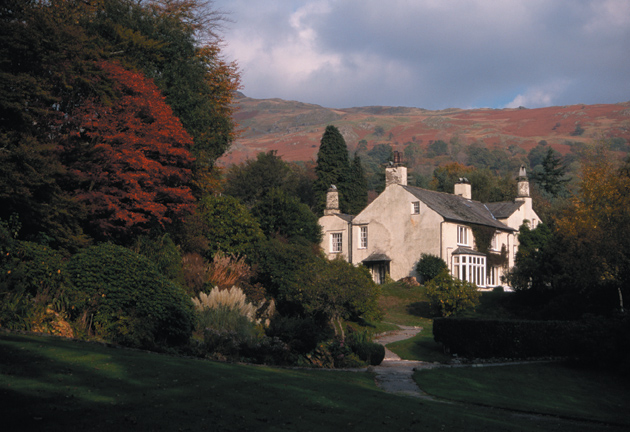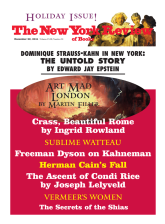On the subject of writers’ houses—taken up in the books by Richard Horan and Anne Trubek—that dark genius Robert Frost would have understood the paradox I find myself inhabiting: that I hate them in general, but soften to something like affection in the face of particular places. Frost enjoyed mocking his own, and others’, ambivalences, especially when personal feeling interfered with principle. Whether or not he also would have enjoyed hearing my footsteps in his old parlor and study is another matter; I would guess not.
There I was, after many years of living in Bennington, Vermont, finally visiting the Robert Frost Stone House Museum—which happens to be in the next town north, South Shaftsbury. Frost is buried in the churchyard of the Old First Church in Bennington, and he lived in the Stone House and another Shaftsbury farmhouse for almost twenty years. Over his long life, he also lived in about a dozen other houses all over New Hampshire and Vermont, and many of these, in the strange world of competitive writer-shrine-making, similarly have been designated “Frost houses.”
Here’s what I hate about writers’ houses: the basic mistakes. The idea that art can be understood by examining the chewed pencils of the writer. That visiting such a house can substitute for reading the work. That real estate, including our own envious attachments to houses that are better, or cuter, or more inspiring than our own, is a worthy preoccupation. That writers can or should be sanctified. That private life, even of the dead, is ours to plunder.
Once long ago someone took me to visit Shakespeare’s house in Stratford. I couldn’t go inside; it felt like snooping, it felt like preening, as if we could own a piece of him for ourselves. As far as I know, the only way to claim our real inheritance from Shakespeare is by reading and studying and memorizing—and, if we are lucky, by acting—his words.
The Robert Frost Stone House is landscaped tastefully, with a couple of handsome barns, and has been curated with modest sophistication. There are text-and-photograph wall exhibits that adorn the two main front rooms of the old farmhouse, offering, among other things, chronologies of Frost’s work, marriage, and children; a formal dissection of the poem “Stopping By Woods on a Snowy Evening,” which Frost wrote while living in this house, along with various and often contradictory statements the poet made in letters, interviews, and essays about the poem’s meaning. As well as Frost’s technical mastery, we see, as we must in any rereading of the poem, his vision of mortality. And here as well is the basic prickliness and condescension in his character that made him deny that vision—to think of insisting that the line “And miles to go before I sleep” is not about death, but only about how “I had in mind that it was getting late and I should be moving on.” I suppose he also said that “After Apple-Picking” was just about picking apples:
For I have had too much
Of apple-picking: I am overtired
Of the great harvest I myself desired.
It is impossible to hate the house itself, with its two rooms and hallway devoted to solemn presentation of the poet, its gift shop with many books and some little wooden objects—pencil boxes, tops, letter openers—made from the wood of lilacs and red pine trees planted by Frost himself, and duly “authenticated” in accompanying certificates. I bought a letter opener. The theme of trees carries over in the museum’s current earnest and attractive display about trees in Western thought and poetry, with an emphasis on the books from Frost’s library. Here, in addition to passages from Dante and the like, is an old photo of the Stone House with a maple tree crowded close to it, and the speculation that Frost’s poem “Tree at My Window” is about this tree—or, possibly, about another tree, one that the poet was remembering from his childhood.
Does anyone really care which tree it was?
The answer, if you pick up a very strange new book, Seeds, by Richard Horan is a thundering Yes. He cares about those trees, and lots of other ones; for some years he has been motoring around the United States in search of tree seeds and seedlings from the houses of the Great (mostly writers, but not exclusively; George Washington and Muhammad Ali sneak in here as well). Horan has snatched magnolia seeds from the Georgia yard of Carson McCullers, maple saplings from the grounds of Edith Wharton’s Mount in Massachusetts, bamboo seeds from the Pennsylvania gardens of Pearl S. Buck, and various southern tree seeds from the Hannibal, Missouri, regions around the childhood home of Mark Twain.
Advertisement
Horan’s prose is breezy, yet curiously labored. At Walden Pond, he goes swimming:
Like a sated crocodile, with only my eyes and the top of my head above the water, I looked up at the trees and the bright blue sky. In the soothing aqua, I began to compare Thoreau’s America and my America.
Later he collects some Walden acorns and stuffs them in his pockets.
Horan and a friend, an arborist in upstate New York, hope to plant a grove from all the seeds Horan has been gathering—a Writers’ Grove. This seems a pre-modern notion, Druidical perhaps, and may be oddly suited to our age. Why bother to read the author’s work at all, when you can just put your hand on a tree and feel “connected” instead?
More to my taste, A Skeptic’s Guide to Writers’ Houses by Anne Trubek came out last year. Trubek, a professor of English at Oberlin College, writes well about the mixed feelings attending her visits to, among many other places, Walt Whitman’s shabby Camden, New Jersey, home, Emerson’s house in Concord, Massachusetts, and the homes of Paul Dunbar (Dayton, Ohio) and Jack London (Glen Ellen, California). I especially liked her chapter on Poe’s many residences:
It is, of course, common to consider authors’ houses haunted, and Poe houses most of all. But if the Philadelphia house is haunted, it is with unlikely and thus charming contentedness.
Since, like me, alas, Trubek is caught between exasperation and fascination, the book as a whole is somewhat incoherent. If one wants a more useful and straightforward guide to writer’s houses all over the world, I recommend the website www.writershouses.com, run by A.N. Devers.
Unless we are, like the Seeds man, true believers, we are caught by endless ambivalence. Frost’s poem extolling “New Hampshire” famously ended with the line, “At present I am living in Vermont.” A recent swing by his grave in the Old First Church cemetery, less than a mile from my house, turned up another bizarre feature of the afterlife of American poets. One is, of course, familiar with the custom of pebbles left on gravestones as a mark of respect or prayer—I believe that it was originally a feature of Eastern European Jewish mourning culture, but it has become more widespread in recent times. I was, however, unprepared for what greeted me adorning Frost’s flat marble marker, about the size of a single bed, engraved with his line “I had a lover’s quarrel with the world.” Instead of pebbles, recent visitors had left—pennies, nickels, and dimes. Quite possibly they had made wishes.




